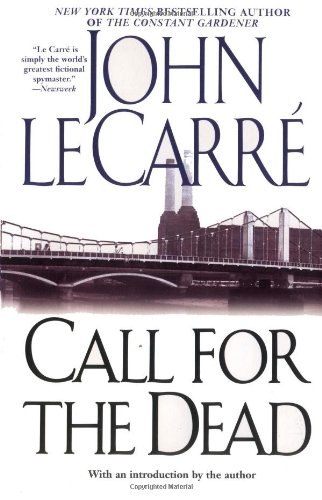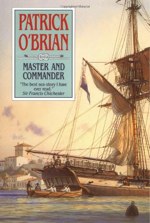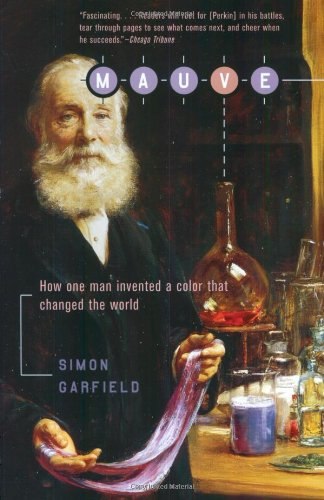When I start reading, the form of the book quickly disappears. Just as I don’t notice the individual letters in each word, I stop noticing the layout, the font, the paper, the binding, and every other physical artifact because I’m focused on the writing.
Eugenio Tisselli has announced that he will temporarily stop creating electronic literature. HTLit covers the news.
By its own definition, electronic literature ‘lives’ within electronic media. But have we, as an academic community, realized what electronic devices are doing to the environment? Do we know where the minerals that are necessary to manufacture computers come from, and under what conditions they are extracted? What about the slave labor involved in the manufacturing process? Have we deeply studied the economic implications of using computers as literary tools, in a time in which all our economic systems are collapsing? In one word, are we being responsible? I have seriously asked these questions to myself.
Tisselli’s CV explains that Tisselli is pursuing a doctorate at The Zurich Node of the Planetary Collegium. Institute of Cultural Studies, University of Applied Arts. In recent years, Tisselli has given talks about electronic poetry in New York, Addis Ababa, Barcelona, Córdoba, Málaga, Santiago (Chile), Paris, Montevideo, Providence, Beijing, Helsinki, Salamanca, Porto, Goa, Buenos Aires, and Mexico City.
That’s a lot of kerosene turned into carbon dioxide, and lots of avionics.
Suppose we all abjured the use of electronic devices right away. Would we get more work done? We would not. We would raise fewer crops, make less stuff. People would be hungry. People would die.
Have we studied the economic implications of using computers as literary tools in a time in which all our economic systems are collapsing? Well, some of of us have been trying.
Folks: this is not news. Ask Augustine. Go to Greece with Lord Byron, or take a swim with Robert Byron, or ride shotgun in Ernest’s ambulance. Have a talk with William Morris. Review your Ruskin. Take a walk in the woods with Thoreau.
- gougères ❧ vanilla pecans ❧ Linda’s retro onion dip ❧ lavender cheese thimbles
- Whiter shade of ale: cream of cauliflower soup garnished with creme fraîche and smoked pistachio brittle
- Frivolity and wisdom: ravioli nudi with chard and Bennington artisanal ricotta in sage butter sauce
- Field work: roast leg of lamb (rubbed in roasted garlic and rosemary) with mushroom sauce ❧ bread pudding with caramelized onion and goat cheese ❧ lentils in champagne ❧ roasted shallots
- Red hot and cold: cherry jelly ❧ mai tai jelly ❧ pecan pie
- Clotilde’s chocolate biscuits ❧ coffee
For a change, I actually managed to make (and remembered to serve) all the planned dishes, and prep went about as well as it could. Some of the dishes took a surprising time, mostly because my stock reserves are low. The mushroom sauce entailed a chicken double stock, the lentils needed a vegetable stock, and those caramelized onions in the bread pudding took the better part of five hours. Once that was out of the way, I could get down to business. All’s well that ends before dinner time, broadly construed.
The huge Colorado leg of lamb (the checkout clerk at the store asked if it was a goat) worked really well.
We used just about every spoon and fork we possess, and could have used more.
by John Le Carré
LeCarré’s first novel. This fine mystery-thriller prefigures much of what is to come, especially the wonderful Tinker, Tailor, Soldier, Spy. This encounter encounter with George Smiley, Peter Guillam, and Inspector Mendel is a terrific little story, a fine little mechanism of deception. Part of the mechanism has rusted because the book’s original audience, in 1961, was less immersed in feminism than we are. Nonetheless, a terrific little book.
Helen North, legendary Swarthmore College classicist, aged 90. Philadelphia Inquirer.
We had a chat as I was packing to leave Swarthmore, heading to a glossy graduate school fellowship at Harvard. I remarked that this seemed pretty much the end of the road for me in classics, and that I'd miss it.
“Oh no,” she replied. “There’s lots of good research from people outside the field.” And she reeled off a selection of important papers by geologists and engineers. You never know where you can lend a hand.
Who is your favorite hero of fiction?
Clytemnestra. I admire her gumption. She is not one to be put upon.
A weeknight dinner for a night-owl friend.
- cream of broccoli soup
- pasta gratin
- hanger steak
- salt-roasted potatoes
- romaine salad
- Meyer lemon jelly
The lemon jelly worked nicely in my new set of jelly molds ($2.29 from eBay). The soup was flat, which surprised me after a much simpler cauliflower soup I made earlier in the week.
by James O'Brian
Lieut. Jack Aubrey, RN, meets Dr. Stephen Maturin at a concert. They dislike each other at once. Thus begins the story of an unforgettable friendship that spans twenty volumes and seven seas. Taken together, they are the great historical novel of an era of historical novels.
Nature: Going Paperless: The Digital Lab.
Blasts from 1982: FORTH in the Computer Toolbox (pdf, turn to page 7). Also, if your library has old copies of Byte, Bernstein, Mark. “The Computer Toolbox.” Byte 7.(3 ) (1982): 456-464.
Nightmare Brunette is subtly elliptical. She appears to write with the complete, disarming frankness of a woman accustomed to talking about things we don’t talk about. Only gradually do you see that she’s talking about other things, too.
Mary-Kim Arnold writes a beautiful, lyrical weblog in which everything is elliptical and nothing seems entirely on balance.
Over breakfast, L. and I talk about the limits of love. She tells me about her son and the time he spends in and out of jail. He is so young – still a boy, really. He is due out, again, but she says she knows that it is only a matter of time. “Next time, we’ve already been told,” she says, “the sentence will be longer, he’ll be put in maximum security.”
She pokes at the contents of her bowl with a spoon. “We’ve already been told.”
There is always something in these wonderful posts — a new, well-crafted puzzle every day, where does she find the time to eat? — that speaks to the death of the writer’s mother or to the end of her first marriage. There is always something new.
It’s been a year since my ELO postmortem. Tinderbox reminds me about major posts on their anniversary. This one might be worth another visit.
The most recent addition to the crowd-sourced directory upon which such hopes rested, and in whose defense so much vitriol was spilled, appears to have been a single stub added four months back. The “Featured article” hasn’t changed since December 2009. Here’s the page about “Our Process”, references in the main navigation list:
Information about the process goes here.
The best spy novel of the century, compressed into two intense and intricate hours. You need to see this, if only for the art direction, which captures the early seventies perfectly. The detailing is wonderful: the short wave radios, the survival of 1940s telephones and 1920s signage, the wall posters, the prostitutes’s ads in the call boxes on which espionage depends.
Charlotte Shane, the writer, (or, at any rate, the narrator) of the intriguing, lyrical Nightmare Brunette is a highly-paid American prostitute. She can write, and she has a lot of material to write about. This could be a salacious fantasy or a political polemic but it’s not. It’s not even primarily about sex; apparently, Shane is so costly that her clients aren’t chiefly interested in sex. And it’s not about the glamour: she does a really fine job of capturing the ennui that endless luxury breeds. Another flight to Bahrain, another long dinner with a billionaire doing his best to impress you. Ho hum.
What’s interesting here is that Shane sees her business so clearly as being a pleasing companion, and thinks so deeply about how to do that, and reflects in interesting ways about what being so immersed in subordinating what she wants to what other people want does to her. More and more people work in service industries, and we’re deeply conflicted about service. Here, she bails out on an appointment, rejecting a potential client.
To his credit he understood. We shook hands and he got in his car and drove away and I stood on the street corner trying not to cry, waiting for a cab to approach. You have to realize, it never starts like that. The men I see are gentlemen. They at least have the air of having lived and functioned in the world for a long time. He’d cashed in a bunch of stocks, he told me that much. I won’t even say what type of car he drove. I’m never this much of a snob. I never have to be.
There’s a lot going on here, a small treatise on class in contemporary America.
I’m not entirely convinced that everything in this weblog is precisely true. It might be. It might be a Kaycee Nicole. It might be a Flight Risk. I don’t think it matters. The weblog is updated infrequently, but here the monthly updates appear to be an intentional choice rather than a sign of a moribund project.
It’s remarkable how good Google is, and it’s frightening how bad it is becoming.
First, the good. In 1949, my mother Patsy Starrels went to Europe, and she kept a slender journal of her post-college adventure. I thought it might be fun to edit it. (Yes, another project; yes, I should know better; yes.) Google is an assistant of astonishing power.
On July 15, Mom embarked (Tourist Class, Deck D, cabin 135) on Cunard’s Queen Elizabeth. As one does on ships, she dined at a table of ten, and she meets people on deck.
Met a girl from France who has been working as a translator for the U.N. and a boy who has been doing graduate work in dentistry at Northwestern—Barry Carolan, an Australian no less. Didn’t know they had anything but kangaroos in Australia.
Two days later, she records that she “found out all about Australia. Barry has never seen a kangaroo outside a zoo. Very disillusioning.”
A chance meeting or two on a very large ship, lost to time. If my mother remembered things (which she doesn’t anymore), I doubt she’d remember it. But Google finds Barry Carolan, a dentist in Castlecrag, New South Wales. Castlecrag, Google is happy to explain, is in North Sydney. In fact, I think I’ve been near there, visiting user interface expert Julianne Chatelaine. Small world.
This happens again and again; if Patsy mentions someone, there’s a good chance that Google can tell you who they are. Not always — especially with young women, who in those days changed their names after marriage — but often. There’s more, too: I easily found many pictures of the ship (though none, yet, of an inside cabin on D deck), printed dining room menus the same season, and eBay vendors selling stationery from the staterooms. All available to a casual researcher, at home on a Sunday morning.
In American football, a team that is out of downs may kick or “punt” the ball to the opposition. Technically, they can punt on any down. This is called a “quick quick” and is meant to surprise the opponents. It is bound to be a surprise, because it is never done; I think the last quick kick I saw was in sixth grade.
The New England Patriots executed one this weekend in a playoff game against the Denver Broncos. Naturally, I wondered: why would they do this? Also, “What were they thinking?” and “What do people who know a lot more about football than I do think about it?” Patriot coach Bill Belichik is often quite good at recognizing unconventional plays that defy common wisdom but nonetheless prove to be a good idea. (Yes, going for it on 4th-and-two against the 2009 Colts was the right move.)
So, let’s turn to Google and try "Brady quick kick." We find:
- a fast, superficial news-ish piece from ESPN’s James Walker
- the same piece at a different URL
- a very similar piece, also without much analysis, by Mike Reiss at ESPN Boston
- a very slender story that serves as a hook for a traffic-generating poll in USA Today
- a SEO link farm called Free Republic, reprinting ESPN
- a blog in the NY Times which essentially rewrites Mike Reiss at ESPN Boston
- another SEO link farm
- another SEO link farm, stealing from USA Today
- another SEO link farm, stealing from ESPN
- a dead link. Since this event happened 36 hours ago, the link lasted a suspiciously short time.
- a dead link from gogreece.com, presumably more SEO fraud, and again suspiciously shortlived.
- a link to an “aggregator” reprinting the ESPN story
- an SEO link farm with a fragment of the ESPN story
- the game story from Alex Marvez for Fox
- a one-sentence post from dmac1043 at a Denver Broncos fan bulletin board
- wikipedia article on quick kicks
- a rewrite of the Reiss piece bylined by Nick Underhill
- an SEO site assembled from screen-scraped passages of stories pasted together
- the same reporting with different words from Ian Logue at Pats Fans.
It looks to me that search results 21-30 are all SEO link farms.
Dear blogosphere: in the most-watched playoff game ever, the controversial Pats execute a play that most fans have never seen since high school. Some players who never attempted this play include Peyton Manning, Joe Montana, Steve Young, Fran Tarkenton, Johny Unitas, and Paul Hornung. George Blanda might have run it a couple of times. Randall Cunningham apparently did it. But face it, it’s almost as rare as a drop-kick.
I’m sure there are people who blog about football, and I bet every one of them was surprised by this play, and that some of them wrote about it.
But there’s no space for that in Google: we’re too busy selling ads on SEO sites and link farms.
Now that the death of blogging is old news, let’s take a moment to look at some terrific writing in terrific weblogs.
We might as well start with Hack, a superbly-written and illustrated weblog by Chicago cabbie Dmitry Samarov.
by Harry Parr and Sam Bompas
This delightful little cookbook explores the lost Victorian craft of jellied desserts. Using good gelatin and real food is a revelation to people accustomed to the flavor and texture of Jell-O™. The glow-in-the-dark gin and tonic jelly was great. Linda says that last night’s cherry jelly, made with frozen cherries, was the best cherry dessert she’s ever tasted.
Jill Walker weighs in on Laurie Emerson’s assertion (at MLA) that electronic literature begins in 2001. She thinks terminology is really important, but finds that “electronic literature” was actually used quite a bit in the 1990s and 1980s.
An hour with my bookshelves revealed many more examples that Jill doesn’t mention. People used lots of phrases back then – hypertext fiction, digital writing, computer-mediated stories. They weren’t planning for this controversy back then, and the term “literature” was contested (and wildly unfashionable) through the first culture wars of the 1990s.
What’s not been mentioned so far is whether the move from “hypertext fiction” to “cybertext” and then to “electronic literature” has actually been of any value to anyone other than fundraisers. Aarseth wanted to broaden the scope of analysis, and then Montfort and Eskillinen used the broadening to declare “hypertext is dead,” but did any of this lead anywhere?
Is there really anything gained by lumping Monfort’s perl one-lines with Opie’s blinking women, Wardrip-Fruin’s web collages, and Andy Campbell’s cinematic puzzles? We occasionally get some indifferently-informed papers on “the essence of the digital,” but are these showing any signs of improvement? Of making a meaningful contribution to knowledge?
Let’s abandon the term “electronic literature” and get back to reading (and making) great stuff.
At HTLit, Stacey Mason discusses recent musings by science journalist Kat Austen about credibility. Austen points out that knowing your source works at Microsoft Research inspires confidence; Mason asks whether this transfers to new media and invites responses to #eLitCred.
I don't buy it.
In the sciences, it shouldn’t matter where you work. Either your work is right, or it’s wrong, or we need to do some more work to find out. Where you work, what other people think of you, whether you’re well dressed or pleasant or have good connections—none of that matters.
And it doesn’t matter in new media, either. afternoon, a story was written by a community college teacher. Patchwork Girl was written by a university student. Go back to the first hypertext conference and look around the room and you see all sorts of affiliations: you had Halasz and Marshall and Trigg from Xerox PARC, which was then as weighty as you could get, but you also had Ted Nelson who was self-employed, Robert Akscyn and Peter J. Brown and Jef Raskin who had high-flying startups, Scott Johnson and Mark Bernstein from garage-scale startups. You had Landow from Brown and Crane from Harvard, but also Shneiderman from Maryland and Frisse from Washington St. Louis and Bolter from UNC.
I think it’s the same in letters, even today. Coover taught at Brown, De Lillo didn’t teach, and this carries no weight at all in assessing their work. Would a university affiliation change your opinion of Jennifer Egan or Allegra Goodman?
Judith Lipton talks about Tinderbox for planning her next book, The Pura Vida Paradox, at Psychology Today.
John Gruber and Dan Lyons, two Apple pundits, enjoy an exemplary scrum. Fists fly, but notice that everybody will walk away with their limbs intact.
Gruber, to be fair, is pulling his punches a bit while showing Lyons how he might have attacked more effectively. But that’s fair: Lyons works for what’s left of Newsweek and Gruber runs Daring Fireball. If he’s ever linked to you, you know that Fireball is awfully big.
by Simon Garfield
In 1856, an eighteen-year-old English chemistry student named William Perkin was trying to synthesize quinine. He failed – quinine would not be synthesized until 1944 (by Woodward and Doering) – but noticed that one of his failures seemed to leave a pretty purple residue. This residue turned out to be mauveine, the first artificial dye and the foundation of the modern chemical industry. This readable account is short of scientific detail (although it does nicely capture how little chemistry Perkin and his contemporaries knew), but nicely captures the importance of the dye trade as a stepping stone to propellants, pharmaceuticals, and plastics.
Nick Carr mourns the lost fixity of fixed type and worries about the consequences of its replacement by digital works that can be corrected and adapted. (It’s fitting that Carr is writing this elegy in the employ of Rupert Murdoch.)
Naturally, Carr doesn’t mention Henry James’s The Ambassadors, which was published with chapters in two different sequences. Or the works of Dante Gabriel Rossetti, which were revised by the author and revised again. Or the symphonies of Anton Bruckner, which exist in all sorts of versions. Or Don Giovanni, which was rewritten because the Viennese singers disliked some arias from the Prague premier.
Print did not always provide fixity
, and digital works are capable of providing better fixity than print. Any forger can insert the a passable title paper with the specious words “first edition,” and few readers will detect (and fewer care about) the imposture. If you care, though. a simple checksum can confirm that your digital copy is really the version it purports to be, and that it has not been altered.
The specter of a textbook that decides that, being in Texas, we should avoid discussing evolution is chilling, but the specter of a textbook that figures out that its reader intensely dislikes equations but does understand graphs is perhaps less daunting.



